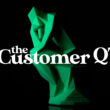For CMOs seeking to deliver on their customer experience ambitions, marketing technology (MarTech) has become an indispensable companion. Without MarTech, it becomes impossible for marketing organizations to activate customers with relevant and personalized content in real-time and 24/7, writes Robin van den Hoven from Capgemini Invent.
by Robin van den Hoven
The starting point for any marketer is the customers and their needs. Marketers should establish customer profiles including ‘customer success factors’ to best decide the approach to realize personalized and relevant engagement across various channels and touchpoints.
By designing and deploying the right set of solutions and tools, marketing technology is used to understand customer success factors – what do customers want, why do they want it and what do they intend to do next? Martech enables interaction design, effectiveness measurement, and data-driven decision-making.
Translating ‘customer-centric’ objectives into the right tooling?
A customer-centric mindset across the organization makes it easier to make decisions, and adopt and implement the right underlying technology to embrace customer-centricity completely. When it comes to customer experience, at Capgemini Invent we recognize four focus areas: Sales, Service, Commerce, and Marketing.
Each area has specific vendors that can be considered ‘best-in-class’ for that specific topic. On top ofthat, we see that customer-centric companies are increasingly investing in two other types ofapplications: 1) Customer Data Platform; 2) Journey Orchestration Tool.
The Customer Data Platform
Organizations are facing rising customer needs. Customers demand 24/7 customer support and they have an increasing need for self-service. To fulfill these needs it becomes a necessity to keep up withthe emergence of new sales and marketing channels. We understand that the rise of all those new channels such as web 3.0 channels or social commerce offers new challenges because the amount ofdata is increasing significantly.
However, all this data also enables you to offer omnichannel hyper-personalized experiences, if used correctly. A tool that enables real-time, personalized customer experience is the Customer DataPlatform (CDP). This can be seen as an open platform that stores all customer data and behavior into to single profile.
A Customer Data Platform should not be confused with a classical Customer Relationship Management (CRM) system, where you also store customer data; the difference between those systems is the type of data your store in it, but it also has a different purpose, architectural build-up, and set of functionalities.
In a CRM, you typically keep a record of your customer with information such as name, address, email, and, based on the type of CRM, actions like a purchase or service-related information. In aCDP, you store everything a customer does, offline and online. In other words, you get insights into all touchpoints that generate or store customer data or event-related customer data. For example, page visits, clicks, loyalty transactions, store visits, logins, etc. The possibilities are endless.
There are different versions of a CDP in the market, all with their minor differences, but they are open platforms that can connect to any type of data source to obtain its data, stitch it based on unique identifiers, and then combine it into one profile (and this time for real). CDP platforms usually differ in factors such as:
– Number of box connectors to data sources and data destinations
– Whether it only analyzes incoming data or also stores it in the platform
– Ways of identity stitching
– Pre-built intelligence
– Dashboarding
– General Data Protection Regulation (GDPR)
We recognize that CDPs are adopted heavily in B2C industries, yet in the B2B domain, we do not see many CDPs being implemented or used. The main reason why we see companies not yet considering a CDP is that they have built their platform, based on a data lake. These companies often lack thenumber of customer data-generating touchpoints, or they think there is no benefit in having a CDP when you are a B2B company.
The first and second can be a valid reason, but a data lake that contains a consolidated overview ofevery customer interaction, which is accessible and real-time, are rare. Less different customertouchpoints often mean collecting fewer customer data. Simply put, if there’s no data to stitch from different endpoints, the benefits are less. But since most companies have an app, website, and CRM it is often worth investing in a CDP.
Being a B2B company doesn’t mean you shouldn’t make the journey more relevant or personalized or have all data and interactions of your customers centralized. With a CDP, B2B companies can better spot and qualify leads, reach the right audience via different touchpoints within a target company and form a better view of potential cross- and upsell possibilities.
The Journey Orchestration Tool
Marketing automation is about capturing opportunities and leads and then nurturing them withpersonalized content. This needs to be done throughout the customer journey and across different channels. We often see companies struggle with the orchestration of the whole customer journey. How do you connect emotionally throughout the customer journey to build long-lasting relationships with them – and enable employees to offer them an end-to-end personalized customer experience?
This is where the Journey Orchestration Tool comes in. This technology enables marketers to use customer data (from the CDP) to orchestrate experiences for customers across channels in africtionless way.
Functionalities of a Journey Orchestration Tool include email templates, journey builders with drag-and-drop functionalities, triggers, analytics, and API capabilities. In essence, the data you collect inside a CDP should be activated to all channels, including the ones you received the data from, based on the preferences of the customer.
Because you have collected the customer’s data and interactions centrally, you can analyze that dataand use it to activate your customer. For example, you can send a promotion at the day and time theperson is most likely to engage, through the channel (s)he prefers with content that is relevant based on previous purchases, online behavior, and other factors.
Important features of a Journey Orchestration Tool include:
- Being able to orchestrate real-time
- Automate as much as possible to shift from traditional marketing to ‘always-on’
- Should be able to connect to every customer touchpoint
- Use intelligence to predict behavior or segment customers
- Follow people through all steps in their journey and act upon that
Implementing MarTech tools
Unfortunately, it is not always that easy to properly implement a Customer Data Platform and Journey Orchestration Tooling. When going for such tooling, companies have often decided to go from being product-oriented to customer-oriented. This means that organizational change and technical implementation should go hand-in-hand; doing one without the other will most likely result in disappointing results.
Leaders often wonder how long an implementation project takes and how much it costs. The answer to that question is: “it depends”. It depends on many factors, like the number of data sources, integrations, existing applications (and whether there are standard connectors available), number ofsegments, the platform chosen, number of touchpoints to be integrated, number of use cases defined, and the complexity of the journeys.
Meanwhile, even after the initial go-live, you will start a continuous optimization process where newly enabled use cases will generate more data that can be used to optimize other use cases.
Implementing this kind of tooling is rarely just a technical implementation. To make optimal use of it, you need to have your vision defined and look at the way your organization is structured and how different departments work together. Adopting an agile, data-driven test-and-learn approach lets you celebrate your successes, makes you learn from your failures, and creates curiosity to try out new things.
In summary
All CMO’s want the key to marketing’s treasure box: the right customer data to deliver real-time experiences. Because by unlocking the treasure box, you will be able to push highly personalized and relevant content to your consumers. Thus, being able to offer them an optimal customer experience. Investing in the adoption of technology by your organization is essential to create value out of thetooling you have implemented.
CMOs are challenged to define a MarTech strategy that provides insights needed to increase agility, efficiency, and ROI. Embracing analytics and advanced technological solutions such as a CustomerData Hub and Journey Orchestration Tool can provide actionable insights enabling CMOs to quickly scale and execute media campaigns and pricing strategies to keep up with the high speed ofchanging customer needs and markets.
Robin van den Hoven is Managing Consultant at Capgemini Invent.
This article originally appeared in Consultancy.EU. Photo by Sandeep Singh on Unsplash.












